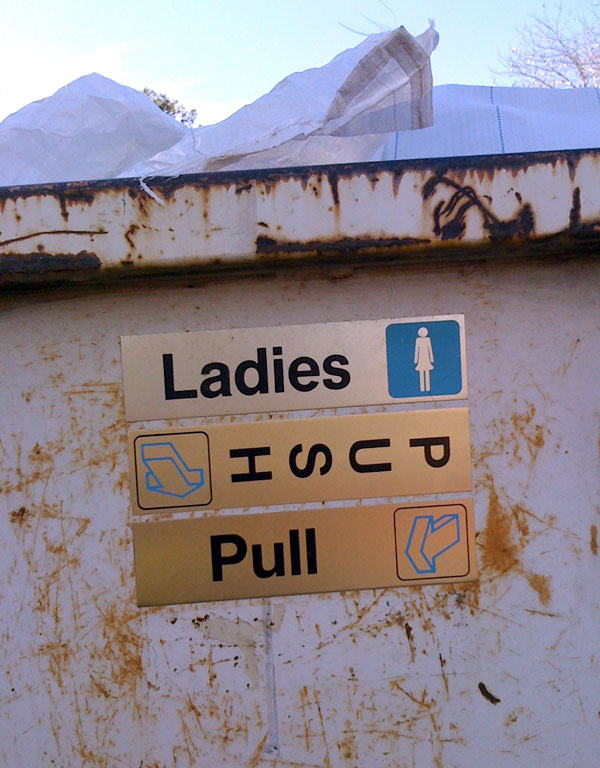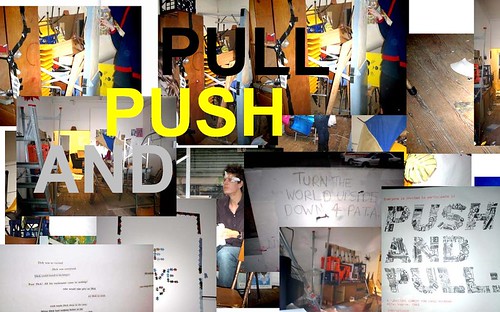Ladies Push Pull
Posted: July 19th, 2009 | Author: lucasmichaelihlein | Filed under: other Push and Pulls | No Comments »
Found by Pat on the back of a truck on Wilson St, Newtown.
Anyone can find or make one or more rooms of any shape, size, proportion, and color — then furnish them perhaps, maybe paint some things or everything. Everyone else can come in and, if the room(s) are furnished, they also can arrange them, accommodating themselves as they see fit. Each day things will change.

Found by Pat on the back of a truck on Wilson St, Newtown.

Inspired by seeing Pat and Tom’s great panorama, I’d just like to draw attention to Jimmy Nguyen’s autonomous contribution to re-thinking Push and Pull in an online environment – a cute interactive website.
Check it out over here.
[the following was originally posted on Lucas Ihlein’s Bilateral blog, after his visit to the New York version of Allan Kaprow’s Push and Pull in late 2007.]

[Excerpt from instructions page at Kaprow’s Push and Pull. The full text of the instructions is available online here, or for the typewriter/paper feel, read them here.]
Creative Time organised a presentation of Allan Kaprow’s Push and Pull: A Furniture Comedy for Hans Hofmann, during the Performa Festival. It ran for three days at a space called Passerby.
Push and Pull is a dynamic installation in which anyone can come and rearrange furniture which is spread around in a room. Well, we might call it an installation now, but in Kaprow’s day (the piece was first presented in 1963) it was a “Happening” (or an “Environment”). It’s clear that Kaprow, in the four years since 18 Happenings in 6 Parts was presented, had substantially reworked his idea of what a Happening should be. If 18 Happenings in 6 Parts was a sort of experimental theatre involving specially prepared “actors”, then by the time he devised Push and Pull, Kaprow had moved on to creating situations where the “audience” was now the primary activator of the work.
Read the rest of this entry »
Recent Comments